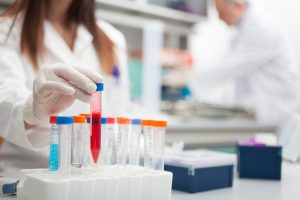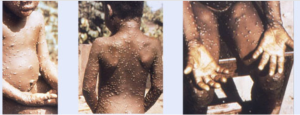With reports about bushfires and melting streetlights in Europe, one cannot forget that Asia is experiencing a similar situation. At the moment, China is currently battling its longest heatwave since 1951 and its most common health consequence, heatstroke, should be addressed. Read on to recognise its symptoms, how it can be treated, and tips on prevention.
On the 20th of July 2022, the UK recorded its hottest day on record – 40.3 C. On that day, two British airports, including the nation’s largest air force base, were forced to shut down as extreme temperature melted part of the runway. In continental Europe, bushfires and smoke have engulfed France, Spain and Portugal. More than 1700 heat-related death has been recorded in Spain and Portugal from the most recent heat wave. Unfortunately, Asia is not excepted from this ferocious summer: China is set for the return of another heatwave this week, with temperatures going above 40 C in multiple parts of the country.
One of the most common health conditions from such extreme heat is heatstroke: caused by your body overheating, because of prolonged exposure to or physical exertion in high temperatures. It has been estimated that more than 5 million people, including 2.6 million in Asia, are killed annually by heat-related diseases. With climate change and global warming, heatstroke and other heat-related illnesses could become a greater health threat to a larger population in the years to come.
How does heatstroke happen?
Normally, the hypothalamus of our brain regulates body temperature by constricting or dilating our peripheral blood vessels and perspiration. When the temperature rises, peripheral blood vessels are dilated to expose more blood to the cooler air, while perspiring dissipates heat into the environment through evaporation.
In heatstroke, such hypothalamic regulatory response is no longer adequate to maintain a normal body temperature. Causes include:
- Increased heat production: exercise, systemic infections, seizure, drug use, overactive thyroid gland.
- Decreased heat dissipation: high environmental temperature or humidity, burns, chronic alcohol abuse or drug use.
- Reduced behavioural response: infants or elderly, patients with intellectual disability.
The high body temperature starts to break down proteins, and cellular membranes that causes irreversible damage to body cells. These include heart muscle cells and neurons in the brain which keep us alive. If not treated promptly, multi-organ failure with cardiovascular collapse will subsequently result in death.
What are the symptoms of heatstroke?
Symptoms can come on suddenly during strenuous exercise in hot weather. They can also come on gradually after prolonged exposure to extreme heat.
- Hot and dry skin – loss of ability to produce sweat
- Body temperature more than 40 C
- Headache
- Extreme fatigue
- Nausea and vomiting
- Palpitation
- Increased respiratory rate
- Tender, rigid, or cramping muscle
- Delirium or hallucinations
- Loss of consciousness
- Convulsions or tremors
How to diagnose heatstroke?
People with the above symptoms are advised to visit the hospital emergency department immediately. Heatstroke is mainly a clinical diagnosis based on a patient’s symptoms. But there are certain blood tests to investigate its severity:
- Liver enzymes: demonstrate the state of liver health
- Urea and creatinine: used to estimate kidney function
- Creatine kinase: a by-product of muscle protein breakdown
- Infection markers: to eliminate the likelihood of systemic infection
Electrocardiography (ECG) is also used to monitor patients’ heart conditions and check for potential heart muscle damage.
What are the treatment options?
The first line treatment is to reduce the body temperature to 39 C and below immediately. In hospital settings, this can be achieved by immersion in ice water, cooling by spraying water, fanning, or cold intravenous infusion. In the meantime, patients are to be rehydrated either orally or through intravascular infusion. Blood electrolyte imbalance should also be corrected once the initial blood test is reported.
How can I prevent getting heatstroke?
The easiest way is to avoid going out during extremely hot days and make sure your room temperature is 30 C and below. However, this is much easier said than done considering many people work outdoors. Here are some easy tips to prevent heatstroke during hot weather:
- Wear loose clothing: Loose clothing allows your body to produce sweat and offers skin the ventilation it needs to dissimilate heat.
- Apply sun cream: Sunburn directly damages skin and stops the normal sweating process. SPF 50 sunscreen is strongly recommended on days 30 C and above.
- Keep hydrated: Plenty of fluids help with sweating and maintaining a normal body temperature.
- Be aware of the heat in parked cars: A parked car under the sun without its aircon turned on can rise more than 10 C in less than 10 minutes.
- Avoid strenuous activity: Avoid exercising strenuously in hot weather. If it’s work-related and you cannot avoid it completely, take regular breaks in cool rooms and ask for help when not feeling well.
- Be aware of your medications: Some medications can affect the body’s ability to regulate temperature or fluid status. Talk to your local pharmacist or doctors if you’re interested in your own medication regime, and before making any changes.
Climate change and beyond
Southeast Asian countries are considered fortunate to avoid the current heatwave engulfing the northern hemisphere. However, as climate change drags on, the occurrences of heat waves will become more common. And more people will experience heatstroke in the days to come. Be prepared before the next heatwave, remain vigilant, take precautions, and stay safe.













